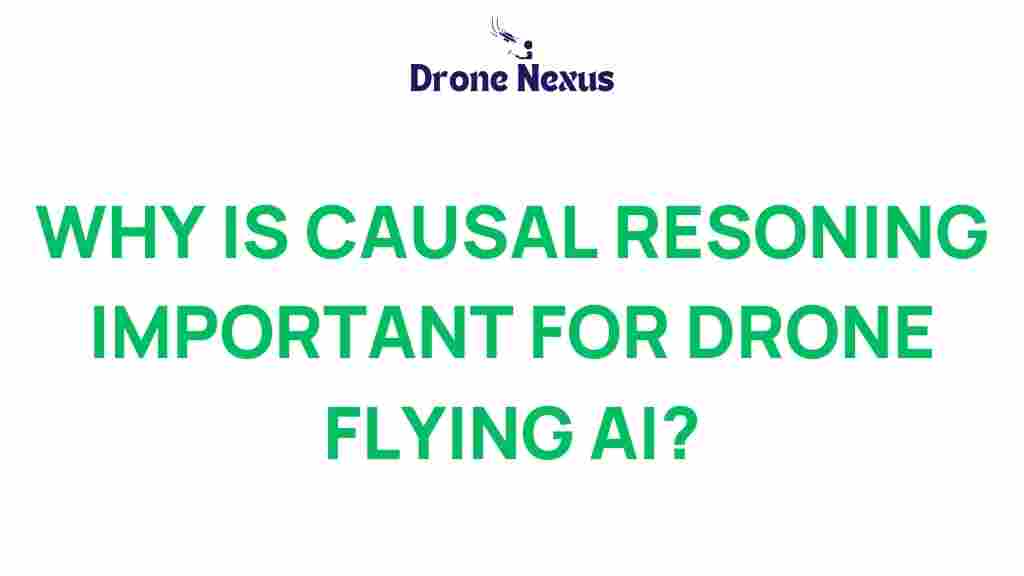The Crucial Role of Causal Reasoning in Drone Flying AI
In the rapidly evolving landscape of artificial intelligence (AI), one of the most intriguing and vital components is causal reasoning. This concept plays a pivotal role in enhancing the capabilities of drone flying AI, enabling these machines to navigate complex environments safely and efficiently. In this article, we will explore the significance of causal reasoning in drone technology, detailing how it improves decision-making, sensor integration, and overall flight performance.
What is Causal Reasoning?
Causal reasoning refers to the ability to identify and understand the cause-and-effect relationships between different events or phenomena. In AI, this involves making predictions and decisions based on the understanding of how various factors influence one another. For drone flying AI, causal reasoning is essential for:
- Understanding environmental changes
- Predicting obstacles and hazards
- Adjusting flight paths based on real-time data
The Importance of Causal Reasoning in Drone Flights
When it comes to flying drones, causal reasoning enables them to operate in dynamic environments. Here are some critical areas where this reasoning plays a central role:
- Obstacle Avoidance: Drones equipped with causal reasoning can analyze potential hazards and make real-time decisions to avoid collisions.
- Path Optimization: By understanding the causal relationships between different flight parameters (like speed, altitude, and wind direction), drones can optimize their flight paths to save energy and time.
- Adaptive Learning: Causal reasoning allows drones to learn from past experiences, adjusting their behaviors based on what they have encountered in previous flights.
How Causal Reasoning Enhances Drone Performance
The integration of causal reasoning into drone flying AI involves several steps, which we will outline below:
Step 1: Data Collection
Drones gather vast amounts of data through various sensors, including:
- GPS for location tracking
- LiDAR for distance measurement
- Camera systems for visual recognition
This data is crucial for understanding the current environment and potential risks.
Step 2: Data Analysis
Once data is collected, the AI system analyzes it to identify patterns and relationships. This analysis is where causal reasoning comes into play:
- Identifying how changes in one variable (like wind speed) affect another (like flight stability).
- Determining the likelihood of an obstacle appearing based on environmental conditions.
Step 3: Decision Making
With the insights gained from data analysis, the drone can make informed decisions:
- Adjusting altitude to avoid a sudden storm.
- Changing course when an unexpected object is detected.
Step 4: Learning and Adaptation
After each flight, drones can use causal reasoning to learn and adapt:
- Analyzing what decisions led to successful flights versus those that encountered issues.
- Updating their algorithms to improve future performance.
Troubleshooting Causal Reasoning Issues in Drones
Despite the advantages of causal reasoning in drone flying AI, challenges can arise. Here are some common issues and troubleshooting tips:
Issue 1: Sensor Malfunction
If a sensor fails, it can disrupt the data collection process. To troubleshoot:
- Check the sensor’s calibration and alignment.
- Replace any faulty components.
Issue 2: Algorithm Failures
Sometimes, the algorithms may not accurately interpret causal relationships. To resolve this:
- Review the underlying data used for training the AI.
- Test the algorithm with various scenarios to identify weaknesses.
Issue 3: Environmental Changes
Rapid changes in the environment can confuse the AI. To mitigate this:
- Ensure that the drone receives real-time data updates.
- Implement fail-safes that allow the drone to return to a safe location in case of uncertainty.
Future Directions of Causal Reasoning in Drone AI
As technology advances, the role of causal reasoning in drone flying AI will continue to evolve. Potential future developments include:
- Improved Machine Learning Techniques: Enhanced algorithms that better understand causal relationships.
- Integration with Other AI Systems: Collaborating with other AI technologies to create a more holistic approach to navigation and decision-making.
- Enhanced Predictive Capabilities: Using causal reasoning for better forecasts of environmental conditions and potential hazards.
Conclusion
In conclusion, causal reasoning plays a crucial role in the development and operation of drone flying AI. By enabling drones to understand cause-and-effect relationships, this technology enhances their ability to navigate complex environments, avoid obstacles, and learn from experience. As we continue to explore the possibilities of AI in aviation, the importance of causal reasoning will only grow, paving the way for safer and more efficient drone operations.
For further reading on the impact of AI in technology, check out this external resource. To learn more about the latest trends in drone technology, visit our blog.
This article is in the category Technology and created by DroneNexus Team
